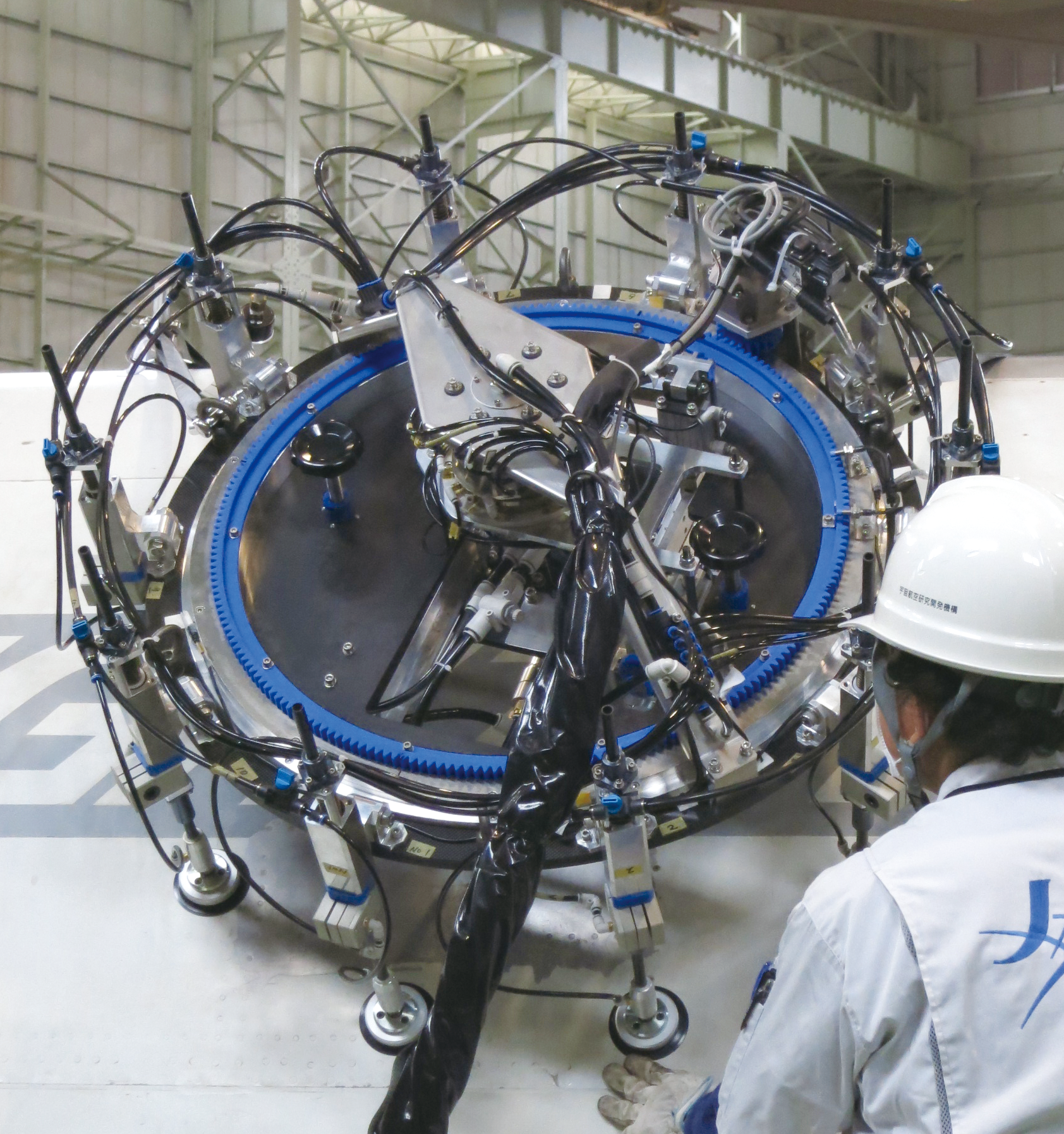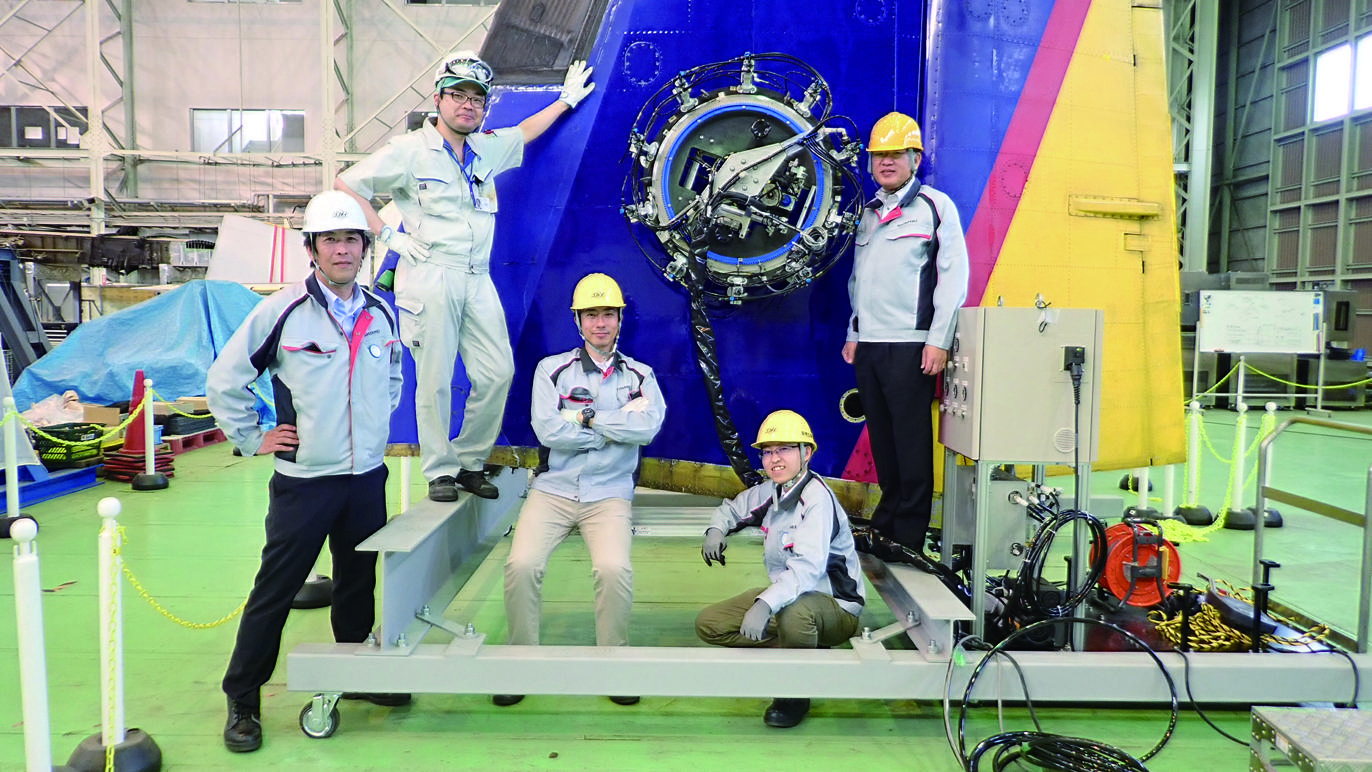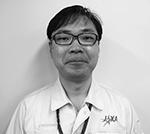Aeronautical Technology Directorate
Revolutionizing Composite Repair for Aircraft:
Automated Scarf Sanding Device
The Aeronautical Technology Directorate has been addressing various fundamental research on aircrafts for many years. Making use of the accumulated research results on materials and structures, we are helping to advance the development of a device that will make a major contribution toward aircraft repair work. When a damage is discovered on composite airframe at the maintenance hangar, first, the damaged area is sanded down into a concave shape. This area is then layered with repair plies and film adhesive, then bonding is performed to repair the damage. This sanding process, which is traditionally performed manually using tools, can be performed automatically by using the newly developed automated scarf sanding device.

Beautiful finish can be achieved even on a curved surface like fuselage.
A damaged of a diameter of 30 centimeters can be repaired in about one hour.
The background for this development lies in the changes in the materials used for the airframe structures. Airframes are made with metal, and also with a composite material that combines two or more materials. With recent aircrafts, the ratio of composites in the structural weight is increasing, so that by 20 years from now, it is estimated that 50% of the mid-sized aircraft maintenance market will be accounted for by composite airframes. Meanwhile, the number of aircrafts and the total number of flights are increasing in order to fulfill the increasing demand for passenger aircrafts. Since composite repairs requires a highly technical skills that are different from those for metal, what is being forecasted is that there will be a shortage of maintenance workers who are able to repair composite airframes.
Hikaru Hoshi, who is involved in this development project, speaks about the characteristics of this device as follows.
"It is difficult to create a clean concave shape accurately when working manually, and it also takes time. The procedure requires highly technical skills, because repair work with poor precision may degrade the strength of the repaired area. The most attractive feature about this developed device is that it allows anyone to process the repair, easily and with high precision. Repair work can be conducted in a short period of time, without requiring expert skills, to help fill in for the future shortage of skilled maintenance workers."
Research and development started in 2016, in partnership with the manufacturer Shinmei Tohoku Machinery Co., Ltd. In proceeding with the project, they faced a major obstacle in figuring out how to reduce the size and weight of the device.
"If the device is heavy, it may damage the aircraft if it happens to collide with it. Thus, it was essential that we make the device lightweight. We repeated a process of trial and error, and over a period of two years, we succeeded in reducing the weight of the device, which initially weighed 200 kilograms, down to 67 kilograms. Our final goal is to reduce it further down to 40 kilograms."
The device is scheduled to be exhibited at the Farnborough Airshow that will be held in the U.K. in 2020. As this is one of the two major airshows in the world, it will provide an opportunity to see how the world reacts to this device. Later, the device is scheduled to be launched into the market around 2022. Hoshi says, "It is only by having the 'fertile soil' achieved through foundational research that enables us to sow new seeds and achieve the positive growth of technology. This device is the result of such basic research efforts." Our passion in development continue in order to deliver the best possible device to maintenance workers around the world.

"We were able to come thus far, as a result of the steadfast foundational research that we have built up over many years."
Profile

|
|
|---|
- Home>
- Global Activity>
- Public Relations>
- JAXA’s>
- JAXA's No.78>
- Revolutionizing Composite Repair for Aircraft: Automated Scarf Sanding Device